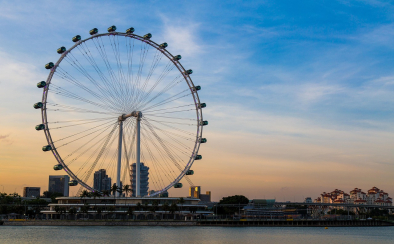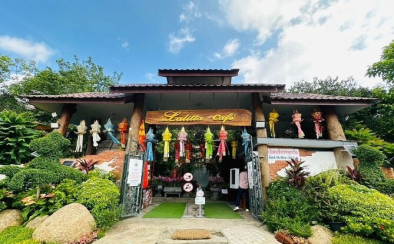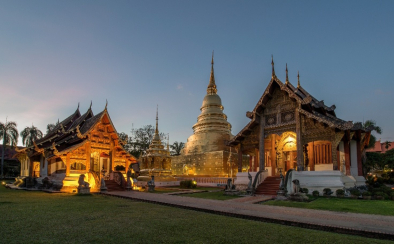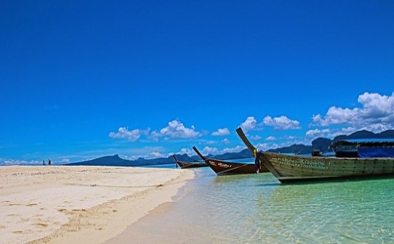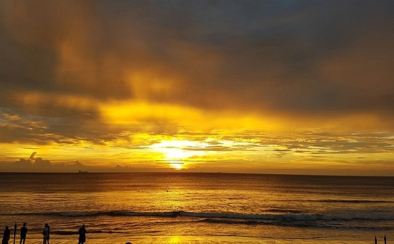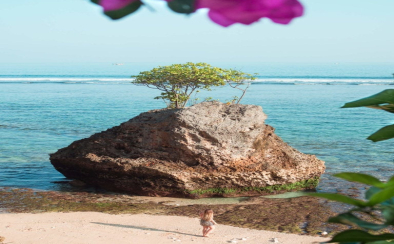
Posted by: Devansh Raturi
This two-week
Bali itinerary gives you a little taste of everything the island has
to offer; beaches, waves, parties, shopping, stunning nature and the colourful
culture. I have also included the Nusa Islands because they’re only a 30-minute
boat ride away and I love spending time there.
“How should I spend my two weeks in Bali” is my most asked question ever. I get the question several times a week, in comments, DMs, emails and from friends and family. So instead of answering everyone separately, here’s how I think you should spend your first visit to Bali.
Two weeks in Bali itinerary overview
This Bali itinerary starts with sun and beach time in Uluwatu, then
continues to hip Canggu for some shopping and partying, you’re then off to one
of my favorite places in the world, the Nusa Islands, before finishing your
holiday in Ubud, the spiritual heart of Bali.
I also recommend a day trip to Seminyak for shopping and maybe a beach
club, and a day trip to North or East Bali to escape the crowds and immerse
yourself in nature. It is the perfect itinerary to get a taste of all the best
things Bali has to offer!
- Day 1-3: Uluwatu
- Day 4-7: Canggu (day
trip to Seminyak/Legian)
- Day 8-11: Nusa
Lembongan (day trip to Nusa Penida)
- Day 12-14: Ubud
(day trip to North Bali)
Best time to visit Bali
The best time to visit Bali is from February to
April. That’s when everything is green after the rainy season, and the weather
is mostly sunny. There are generally fewer people during this time as well.
Bali experiences two distinct seasons, the rainy
season and the dry season. I have visited Bali during every month of the year,
several times, and rarely experienced rain for more than a few days at a time.
The rainy season in Bali runs from November to March. During this time
the weather is humid, with occasional thunderstorms and heavy downpours. The
upside of visiting during the wet season is that prices are lower and crowds
are smaller.
The dry season in Bali runs from April to October.
This is the most popular time to visit, as the weather is sunny and dry, with
low humidity and little rain.
The peak tourist season is from July to August and
around Christmas, so expect higher prices and larger crowds.
Stay safe
Unfortunately, I have seen my fair share of
accidents involving tourists in Indonesia. One time a guy driving crazy fast on
a scooter in only boardshorts slipped on a steep gravel road and had to be
rushed to hospital. Another time a surfer needed 150 stitches after being cut
by a surfboard fin.
I’m not saying this to scare you, just so you are
prepared in case anything happens.
It works just like a subscription, and the best part is
that you don’t need to know your itinerary in advance!
Uluwatu
I’ll start this Bali itinerary off with my favorite
area on the island, the Bukit Peninsula. This is where you’ll find all
the best white sand beaches and some of the best surf and yoga retreats in Bali. Uluwatu, covering the southwest part of the
Bukit, is known for its stunning beaches, dramatic cliffs, and world-class surf
breaks.
I usually come here at the beginning of every trip
to try to get some color on my fair Norwegian skin. There is so much to do in
Bali, but some time on the beach is usually my highest priority.
Ask your hotel to arrange a scooter for you,
or get one delivered. To get the most out of your stay on the Bukit,
you should definitely drive by yourself.
Traffic down here is not too bad and the feeling of
warm sun on your face and the breeze flowing through your hair while you zip
through the winding streets is just the best feeling in the world.dfdsfdBali, the emerald jewel of
Indonesia, beckons with a tapestry of experiences far beyond the well-trodden
paths. While Ubud's spiritual allure, Seminyak's chic beaches, and Uluwatu's
dramatic cliffs are essential chapters in the Bali story, delving deeper
reveals an island brimming with diverse landscapes, ancient traditions, and
hidden sanctuaries. Prepare to embark on an extended journey that explores the
multifaceted charm of the "Island of the Gods."
Ubud and Its Enchanting
Surroundings: A Deeper Dive
Beyond the central hub, the greater Ubud region
holds countless treasures. Venture to Tirta Empul Temple, a sacred water
temple where you can partake in a Melukat purification ritual, immersing
yourself in the holy springs believed to cleanse the spirit. Explore the Campuhan
Ridge Walk, a scenic trail offering breathtaking views of the surrounding
hills and valleys, perfect for an early morning or late afternoon stroll.
Discover artisan villages like Celuk, renowned for its intricate silver
and gold jewelry, and Mas, famed for its exquisite wood carvings, where
you can witness skilled craftspeople at work and acquire unique souvenirs. For
a dose of adventure, try white-water rafting on the Ayung River,
navigating through lush gorges and exhilarating rapids. Delve into Bali's
spiritual heart with a visit to a local Balinese healer or by participating in
a traditional cooking class to learn the secrets of authentic Indonesian
cuisine.
South Bali's Diverse Coasts:
Beyond the Bustle
While Seminyak and Canggu pulse with energy, South
Bali offers quieter coastal escapes. Explore the Bukit Peninsula's stunning
beaches, such as Nusa Dua, known for its calm, turquoise waters and
luxurious resorts, ideal for families and relaxation. Discover the hidden coves
and powerful surf breaks of Padang Padang, a picturesque beach famous
for its appearance in "Eat Pray Love." Journey further south to Nusa
Penida, a rugged island accessible by a short boat ride, boasting dramatic
cliffs like Kelingking Beach (the "T-Rex Bay"), natural wonders like
Angel's Billabong and Broken Beach, and world-class diving and snorkeling spots
teeming with marine life, including majestic manta rays.
North Bali's Tranquil Beauty: A
World Away
Escape the southern crowds and discover the serene
beauty of North Bali. Lovina Beach, with its calm black volcanic sands,
is famous for its early morning dolphin watching tours. Explore the stunning
twin lakes of Buyan and Tamblingan, surrounded by lush rainforest,
offering opportunities for canoeing, trekking, and immersing yourself in
nature. Visit the majestic Sekumpul Waterfall, often cited as Bali's
most beautiful, cascading down multiple tiers amidst verdant cliffs. Discover
the spiritual significance of Pura Ulun Danu Bratan, a picturesque
temple located on Lake Bratan, often shrouded in mist, creating a mystical
atmosphere. The cooler climate and tranquil pace of life in North Bali offer a
refreshing contrast to the south.
East Bali's Cultural and Natural
Wonders: Untouched Charm
East Bali is a region of dramatic volcanic
landscapes, significant temples, and traditional villages. Visit Besakih
Temple, known as the "Mother Temple" of Bali, perched high on the
slopes of Mount Agung, offering breathtaking views (when the weather permits).
Explore the royal water gardens of Tirta Gangga, a serene complex of
pools, fountains, and lush landscaping. Discover the traditional village of Tenganan
Pegringsingan, home to the Bali Aga people, who have maintained their
unique customs and traditions for centuries, including the intricate double
ikat weaving technique. For adventurous souls, consider trekking up Mount
Batur for a sunrise that paints the sky in vibrant hues or, for experienced
hikers, the challenging ascent of the sacred Mount Agung.
West Bali's Untamed Wilderness:
Nature's Embrace
West Bali offers a glimpse into a more untamed and
less developed side of the island. Explore West Bali National Park, a
vast protected area encompassing diverse ecosystems, from mangrove forests and
coral reefs to savanna and rainforest, home to a variety of wildlife, including
the endangered Bali starling. Discover hidden beaches and surf spots along the
rugged coastline. Experience the tranquility of rural villages and witness
traditional farming practices. West Bali is a haven for nature lovers and those
seeking off-the-beaten-path adventures.
Central Bali's Highland
Retreats: Mountain Majesty
Venture into the central highlands to discover
cooler climates and stunning mountain scenery. The region around Munduk
offers breathtaking vistas, cascading waterfalls like Melanting Waterfall, and
opportunities for hiking and exploring coffee and clove plantations. Immerse
yourself in the beauty of the Jatiluwih Rice Terraces, a UNESCO World
Heritage site showcasing Bali's ingenious Subak irrigation system on a grand
scale. The central highlands provide a refreshing escape from the coastal heat
and offer a different perspective on Bali's natural beauty.
Immersive Experiences:
Connecting with the Soul of Bali
Beyond simply visiting places, immerse yourself in
the Balinese way of life. Attend a traditional Balinese dance performance, such
as the Legong or Barong dance, to witness the island's rich artistic heritage.
Participate in a Balinese cooking class and learn to prepare authentic dishes
using local ingredients. Visit a local market (pasar) to experience the vibrant
atmosphere and sample tropical fruits and snacks. Engage with the warm and
hospitable Balinese people, learn a few basic phrases of Bahasa Indonesia, and
gain insights into their culture and traditions. Consider attending a local
ceremony or festival (if your visit coincides), offering a unique glimpse into
Bali's spiritual life.
Bali is not a destination to be rushed; it is a
place to be savored, explored, and experienced on multiple levels. From its
iconic landmarks to its hidden corners, each region of the island offers a
unique charm and a distinct flavor of Balinese life. By venturing beyond the
popular tourist trails, you can uncover the vast and authentic beauty that
makes Bali truly the "Island of the Gods." This extended exploration
promises a richer, more profound connection with the heart and soul of this captivating
Indonesian paradise.
A Gastronomic Odyssey: A Food
Lover's Guide to Bali
Bali. The name evokes images of lush rice terraces,
sacred temples, and sun-kissed beaches. But for those in the know, Bali's most
captivating story is told not through its landscapes, but through its flavors.
The island's cuisine is a symphony of aromas, spices, and textures—a rich
tapestry woven from centuries of tradition, fresh local produce, and a generous
dose of creative flair. This is more than just a food blog; it's an invitation
to embark on a gastronomic odyssey, a journey into the soul of Bali, one
delicious bite at a time.
The Soul of Balinese Cooking:
The Magic of Basa Genep
To truly understand Balinese food, you must first
know basa genep, or the "complete spice paste." This is the
foundational secret behind the island's distinctive and complex flavors. Unlike
other cuisines that might rely on a few dominant spices, basa genep is a
harmonious blend of nearly 15 different ingredients.
A typical basa genep includes a mix of
"wet" spices like shallots, garlic, galangal, ginger, and turmeric,
combined with "dry" spices such as coriander seeds, black pepper, and
candlenut. This aromatic paste is pounded into a fragrant pulp and forms the base
for almost every traditional Balinese dish. Its use is a testament to the
island's philosophy of balance and harmony, ensuring every meal is a rich,
multi-layered experience.
The Culinary Icons: Must-Try
Traditional Dishes
No visit to Bali is complete without tasting its
most famous culinary creations. These are the dishes that define the island's
cuisine and are rooted in its ceremonial and daily life.
- Babi Guling (Suckling Pig): The King of Balinese Cuisine
- This
is arguably Bali's most famous dish. A whole pig is meticulously seasoned
with a potent basa genep and slow-roasted over a fire, resulting
in incredibly succulent meat and perfectly crispy, golden-brown skin.
Traditionally a celebratory dish for special occasions, babi guling
can now be found at dedicated warungs across the island. The dish
is typically served with a generous scoop of rice, spicy lawar (a
mixed vegetable salad), and crispy pork crackling.
- Where
to Find It: For
an authentic taste, seek out a local warung like Ibu Oka in Ubud,
Warung Babi Guling Pak Dobiel in Nusa Dua, or Babi Guling Sari Dewi in
Denpasar.
- Sate Lilit (Minced Seafood Satay): The Flavorful Skewer
- Sate
lilit is a
delightful departure from the standard skewered meat. Minced meat (often
fish, chicken, or pork) is mixed with grated coconut, a touch of coconut
milk, and a vibrant basa genep. This mixture is then wrapped
around a lemongrass or bamboo stick and grilled over charcoal. The result
is a juicy, fragrant satay with a smoky aroma, and the lemongrass imparts
a subtle, zesty flavor.
- Where
to Find It:
You'll find sate lilit at most local warungs and especially
at seafood restaurants in places like Jimbaran.
- Nasi Campur (Mixed Rice): A Plate of Pure Bali
- For a
true taste of everything, Nasi Campur is your best bet. This
"mixed rice" dish is a generous plate of steamed rice served
with an assortment of small portions of different Balinese dishes. The
toppings can vary widely but often include sate lilit, crispy
fried chicken, spicy lawar, fried tofu, boiled egg, and a dollop
of fiery sambal. It's a customizable feast that perfectly
showcases the diversity of Balinese flavors.
- Where
to Find It: Most
local warungs specialize in Nasi Campur, allowing you to
create your own plate from a buffet-style spread.
- Ayam/Bebek Betutu (Spiced Slow-cooked Chicken/Duck): A Ceremonial
Masterpiece
- Similar
to babi guling, betutu is a ceremonial dish that requires
hours of preparation. A whole chicken or duck is stuffed with a rich,
spicy basa genep, wrapped in banana leaves, and then cooked in a
coal fire or buried in the ground for a long period. This slow-cooking
process yields incredibly tender, fall-off-the-bone meat infused with a
deep, earthy spice.
- Where
to Find It: Look
for dedicated warungs or restaurants that specialize in betutu
for this labor-intensive dish.
From Street Stalls to Warungs:
The Heart of the Eatery Scene
The real culinary soul of Bali lies in its humble
street food stalls and warungs. These small, family-owned eateries are
where locals gather and where you'll find the most authentic flavors at the
most affordable prices. Don't be shy—pull up a plastic chair and prepare for a
genuine experience.
- Warungs: The term warung simply means a small cafe or eatery. They
are a staple of Balinese life, serving home-cooked food with a smile. The
experience is often rustic and communal, but the flavors are unbeatable.
- Street Food: As you wander the streets of Bali, the aroma of street food will
guide you. Look for Bakso, a delicious meatball soup served from a
cart; Martabak, a savory, stuffed pancake or a sweet, thick one;
and Terang Bulan, a sweet, fluffy pancake filled with chocolate,
cheese, or nuts.
A Taste of the Ocean: Jimbaran
Bay's Seafood Feast
For an unforgettable dining experience, head to
Jimbaran Bay at sunset. Here, dozens of seafood restaurants set up tables
directly on the sand. The ritual is simple and glorious: you choose your fresh
catch of the day from a display of lobsters, crabs, prawns, and various fish.
The seafood is then grilled over a fire fueled by coconut husks, giving it a
unique smoky flavor. As you feast, the sky turns into a canvas of fiery orange
and pink, with the sound of the waves providing a perfect soundtrack.
The Modern Culinary Scene: A
Global Fusion
Bali's food scene has evolved to embrace a global
palate, especially in trendy areas like Seminyak, Canggu, and Ubud. The island
has become a mecca for healthy eating, with an abundance of plant-based,
organic, and raw food options.
- Vegan and Vegetarian
Paradise: Bali is often hailed
as a top destination for vegans and vegetarians. Restaurants like Kynd
Community and The Shady Shack in Canggu, and Alchemy and
Zest in Ubud, have perfected the art of delicious, creative
plant-based cuisine.
- International Fusion: Beyond local food, you'll find everything from world-class fine
dining restaurants to cozy Italian pizzerias and authentic Japanese sushi
bars. Chefs from around the globe have been drawn to Bali's relaxed
atmosphere and incredible produce, creating a vibrant and diverse culinary
landscape.
A Sweet Ending: Desserts and
Drinks
No meal is complete without a sweet treat and a
refreshing drink.
- Pisang Goreng: A simple but addictive dessert of deep-fried banana fritters,
often served with a dusting of cinnamon or a drizzle of palm sugar syrup.
- Jaje Laklak: Small, green, traditional rice cakes served with grated coconut
and liquid palm sugar (gula merah).
- Es Kelapa Muda: A simple yet perfect drink for the tropical heat. This is just
fresh young coconut water served with the soft flesh scraped into the
glass.
- Jamu: A traditional herbal tonic made from turmeric, ginger, tamarind,
and other spices, believed to have powerful healing properties.
Bali's food scene is a journey in itself—one that
reflects the island’s deep-rooted culture, its connection to the land, and its
embrace of a modern, global community. So, come to Bali not just for the views,
but for the flavors. Be adventurous, eat at a warung, try something you
can't pronounce, and let your taste buds discover the true magic of the
"Island of the Gods."


